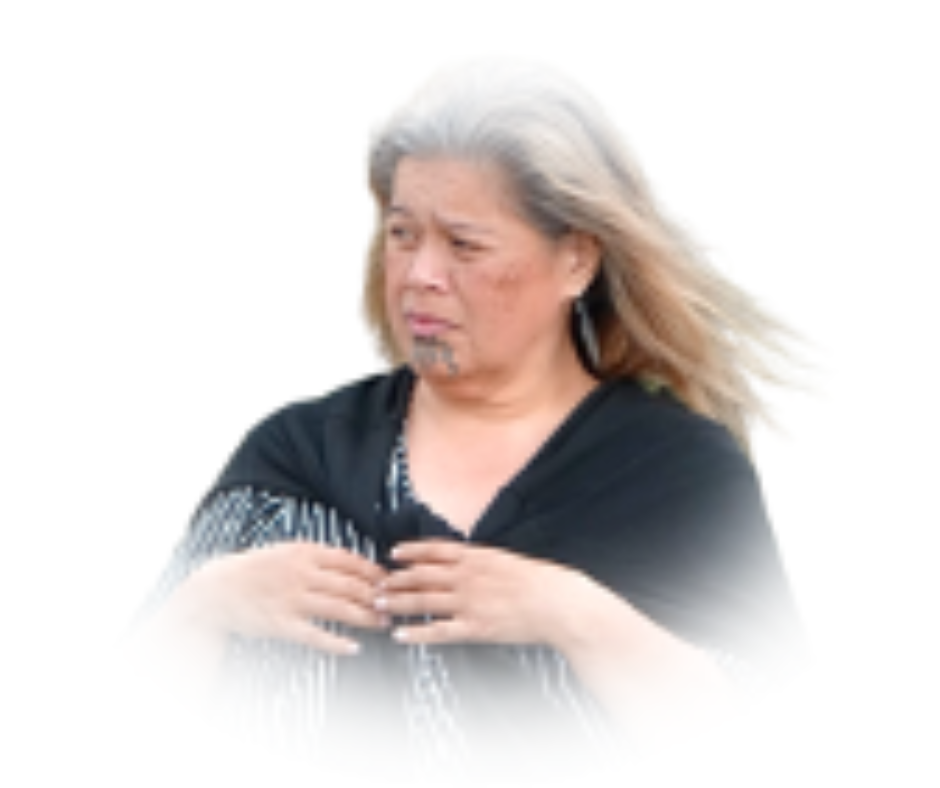Land & Takutai Moana Subcommittee
Land & Takutai Moana Sub-Committee
The claimant group is established under the umbrella of Te Paatu ki Kauhanga Trust Board, which authorised two or more claimants to form a cluster to facilitate and support the participation of claimants in the Wai 45 Renewed Muriwhenua Land Inquiry under the Land & Takutai Moana subcommittee. The committee consists of one member per claimant group. The trust administers the day-to-day operations and administration of the subcommittee. Claimants may be added to the subcommittee if they have a common interest in the inquiry district. The subcommittee was formalised in August 2020. The subcommittee also includes applicants for Nga Hapu o Ngāti Kahu under the Marine and Coastal Area (Takutai Moana) Act 2011.
Susan Peters
Te Paatu, Ngāti Tara, Matakairiri, Ngāti Kahu elected as chair of the Land & Takutai Moana Sub-Committee in February 2025, and chair of Te Paatu ki Kauhanga Trust in May 2025. Susan is the Te Paatu ki Kauhanga Trustee representative to the subcommittee and has been a trustee of the trust since its inception.
Ngaire Tauhara-White & Waha Tauhara
Wai 1842, the Tauhara, Waiaua and Te Kaitoa Whanau Lands claim. A claim was made by Rev. Pereniki Tauhara, Ngaire Tauhara-White, and Waha Tauhara on behalf of the descendants of Matiu Tauhara, Terina Kingi Waiaua, Pene Te Kaitoa, and Te Paatu ki Kauhanga hapu.
Tina Latimer
Wai 1359, the Muriwhenua Blocks Claim. On behalf of the late Sir Graham Latimer and Tina Patricia Latimer, and behalf of themselves and the descendants of Te Paatu tupuna. Paora, Paerata, Hare Reweti Hukatere, Ratima Aperahama and Ratima.
Trevor Wi Kaitaia
Trevor is also an original applicant under the Marine and Coastal Area (Takutai Moana) Act 2011, formally registered by the late Rev. Pereniki Tauhara, the late Glen Larkin Kaiwaka, and Atihana Moana Johns.
Leah Wright
Wai 1662, the Muriwhenua Hapu Collective Claims. On behalf of Leah Wright and herself, whanau and Ngāti Tara, Te Paatu, Werowero, and others.
Tarewa Rota
WAI 295, on behalf of the beneficiaries, including the Mangahoutoa Trust, the Te Tahaawai, and the Te Uri-o-te-Aho tribes. Tarewa Rota is the claimant for WAI 295. The original named claimants also included Lucy Te Awa (secretary), Pokai Tahere (treasurer), Basil Flavell, Della Snowden, James Heke, Guy Kaio (trustees), and kaumatua Karena Malcom, Hone Tahere, and Simon Snowden.
Robert Gabel
Wai 1668 and 1886 were registered on behalf of the Ngāti Tara descendants on 22 April 2008.
Wai 45 Renewed Muriwhenua Land Inquiry
Te Paatu ki Kauhanga has long-standing grievances about acts and commissions of the Crown in breach of Te Tiriti o Waitangi since 1840. The claimants have appeared before the Waitangi Tribunal within the Muriwhenua Inquiry and the Paparahi o Te Raki Inquiry. The claimants seek redress of their grievances, return of lands, waters, foreshore, seabed, marine and all available resources, and restoration of relationships with all levels of government. Te Paatu ki Kauhanga seeks to provide a platform for rebuilding their community.
In anticipation of the Crown engaging with various hapū and other organisations to negotiate a settlement of the historical Treaty claims in the Ngāti Kahu rohe, Te Paatu ki Kauhanga Trust Board is established as the hapū entity to receive and manage any settlement benefits for Te Paatu ki Kauhanga hapū.
In the late 20th century and into the 21st century, together with other tribal relations from Muriwhenua, Te Paatu ki Kauhanga participated in the Waitangi Tribunal and other legal and political engagement processes in respect of their interests and claims over their lands, waters, coast, and seas. Te Paatu ki Kauhanga has taken steps to establish a Post Governance Settlement Entity (“PGSE”) intended to hold and administer those lands, waters, and resources on behalf of the beneficiaries.
Te Paatu ki Kauhanga claimants will continue to have direct input into negotiating their historical claims, and their representatives will ensure their endorsement by maintaining ongoing, organized hapū communications and structures.
Te Paatu ki Kauhanga claimants intend to be ready to enter into discussions with the Crown and aspire to reach a stage where Te Paatu ki Kauhanga may negotiate and enter into a Deed of Settlement with the Crown to achieve the return of any available Crown land and resources in their rohe to them as an on-account part settlement of their historical Treaty claims against the Crown.
To meet the settlement requirements prescribed by the Crown, a post-settlement governance entity needed to be established to sign the Deed of Settlement and receive and administer the settlement assets received as part of the Te Paatu ki Kauhanga Treaty settlement. Te Paatu ki Kauhanga Hapū Trust is established and settled for this purpose and to protect and advance Te Paatu ki Kauhanga. Under the Trust Deed, the whānau are entitled to benefit from settlement redress.
Wai 45 Renewed Muriwhenua Land Inquiry
Historical Treaty of Waitangi Claims are made by Māori against the Crown for breaches of the Treaty before 1992. Historical settlements aim to resolve claims and provide some redress to the claimant groups. When a settlement is reached, it becomes law.
Large Natural Groups (LNGs) are claimant groups consisting of a single iwi, a group of iwi, or a collection of hapu from the same geographical area.
The settlement provides three types of redress: a historical account of the Treaty breaches, a Crown acknowledgement and apology, cultural redress, and commercial and financial redress.
The treaty settlement process has four stages: pre-negotiation, negotiation, legislation, and implementation. The key objective is negotiating a settlement of the historical Treaty of Waitangi claims.
The Te Paatu ki Kauhanga Trust Board and the claimants formulated a cluster agreement in August 2020 to achieve this.
An application was made to the Crown Forestry Rental Trust to support the ongoing operations for claims before the Waitangi Tribunal in March 2021. The trustees authorize the Land & Takutai Moana subcommittee to lead Te Tiriti o Waitangi (Treaty of Waitangi) claims before the Waitangi Tribunal and the High Court.











